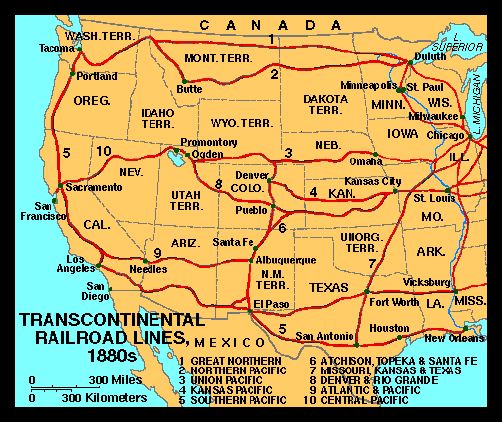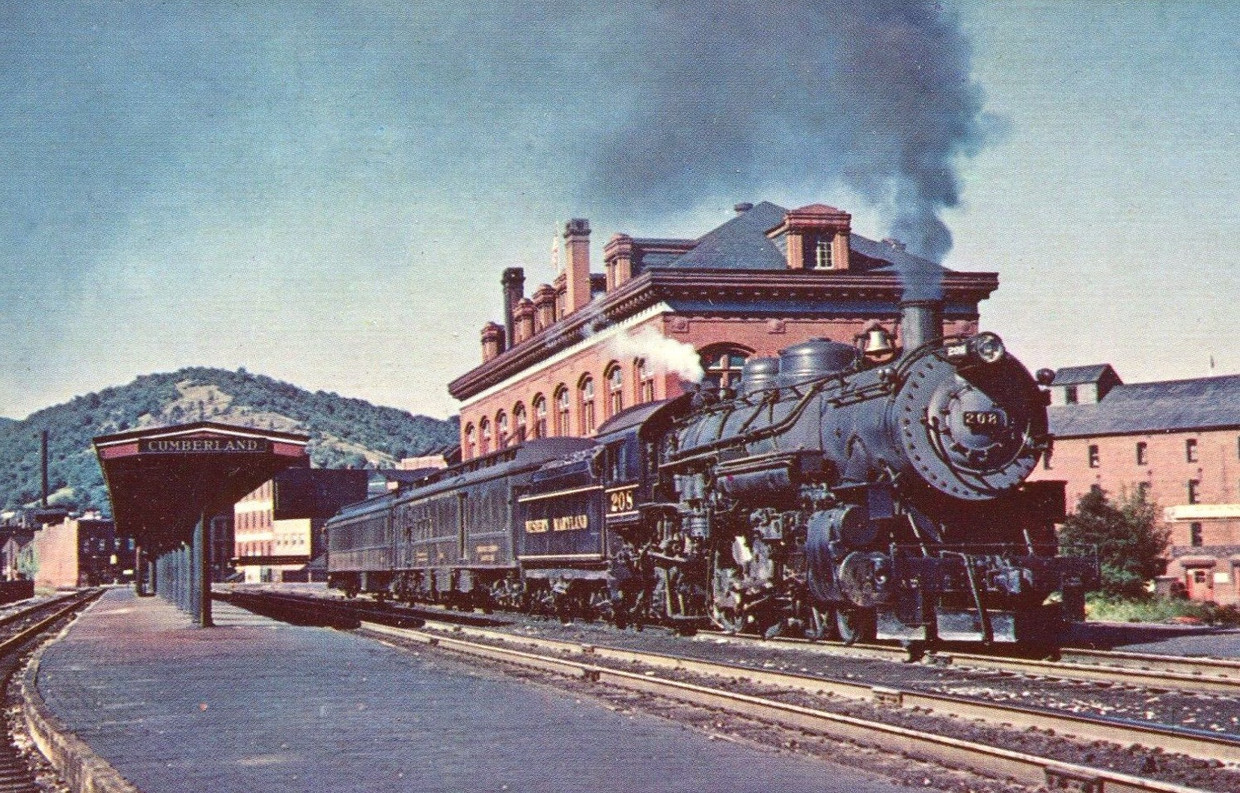Manifest Destiny on Rails: The Transcontinental Railroad
The dream of connecting the East and West coasts.
The 19th century in the United States was marked by a fervent belief in Manifest Destiny, the idea that Americans were destined to expand their territory across the continent. As settlers pushed westward, the need for efficient transportation became increasingly evident. The dream of connecting the East and West coasts of the vast nation was born. This dream would become a reality through the construction of the First Transcontinental Railroad, one of the most significant engineering feats and economic endeavors of the era. This audacious vision would not only revolutionize transportation but also unite a sprawling nation like never before.
The idea of a transcontinental railroad had been floating around for years, but it was the confluence of factors such as westward expansion, economic growth, and the need for efficient transportation that transformed this dream into a national imperative.
The driving force behind this ambitious undertaking was the Pacific Railway Act of 1862, signed into law by President Abraham Lincoln. This legislation provided federal support for the construction of the railroad, marking a pivotal moment in American history. It offered land grants and subsidies to two railroad companies, the Central Pacific Railroad Company of California and the Union Pacific Railroad Company of Nebraska, tasked with building the rail lines from opposite ends of the continent.
The construction of this transcontinental link was not without its challenges. The Central Pacific had to tackle the formidable Sierra Nevada Mountains, while the Union Pacific contended with the vast expanse of the Great Plains and the towering Rocky Mountains. The labor was grueling, and the conditions harsh, but the determination to connect the coasts remained unwavering.
Both railroad companies employed diverse workforces. The Central Pacific famously enlisted thousands of Chinese laborers, who played a crucial role in conquering the Sierra Nevada's rugged terrain. The Union Pacific relied heavily on Irish immigrants and Civil War veterans to lay tracks across the vast plains.

The construction of the First Transcontinental Railroad.
The idea of a transcontinental railroad was not new, but the scale of the project and the challenges it posed were monumental. The Civil War and the southern secession delayed progress, but the vision persisted. On July 1, 1862, President Abraham Lincoln signed the Pacific Railway Act into law, which provided federal support for the construction of the railroad. This landmark legislation would become a catalyst for a historic undertaking.
The construction of the First Transcontinental Railroad began simultaneously from both coasts, with the Central Pacific Railroad Company of California building eastward from Sacramento, California, and the Union Pacific Railroad Company of Nebraska heading westward from Omaha, Nebraska. The two companies were tasked with meeting somewhere in the middle, an ambitious and daunting endeavor given the vast expanses of untamed wilderness and formidable geographic obstacles they had to overcome.
The role of Central Pacific and Union Pacific in its completion.
The Central Pacific and Union Pacific railroads faced distinct challenges during the construction of the First Transcontinental Railroad. The Central Pacific had to contend with the rugged terrain of the Sierra Nevada Mountains and the daunting task of blasting tunnels and laying track through solid granite. Meanwhile, the Union Pacific confronted the Great Plains, the Rocky Mountains, and the harsh Wyoming winters.
Central Pacific, led by Leland Stanford, enlisted thousands of Chinese laborers who played a pivotal role in the construction of the railroad. They overcame immense hardships and prejudice to help build the western portion of the line. The Central Pacific reached Promontory Summit, Utah, on May 10, 1869.
Simultaneously, the Union Pacific, under the leadership of Thomas Durant, employed predominantly Irish and Civil War veterans. Their efforts culminated in the driving of the golden spike at Promontory Summit on the same day as the Central Pacific. This ceremonial event marked the completion of the First Transcontinental Railroad, connecting the nation like never before.
The Transcontinental Railroad revolutionized transportation and commerce in the United States. It drastically reduced travel time between the coasts from months to just a few days, transforming the nation's economy and society. It allowed for the rapid movement of people and goods, facilitated western expansion, and solidified the idea of a united nation stretching from sea to shining sea.
In conclusion, the First Transcontinental Railroad stands as a testament to the determination and ingenuity of 19th-century America. It was a manifestation of the nation's destiny to expand, innovate, and connect its people across the vast continent. The Central Pacific and Union Pacific, along with the laborers who toiled tirelessly, overcame immense challenges to create a symbol of American progress and unity that endures to this day. The Transcontinental Railroad remains an iconic achievement in the annals of American history, forever linking the dreams of Manifest Destiny to the reality of railroads.
Recent Posts
-
Prototype Spotlight: GE ES44AC — Modeling a Modern Freight Workhorse
Prototype Spotlight: GE ES44AC — Modeling a Modern Freight Workhorse Published 2025-09-29• 8–10 min
-
How to Build a Realistic Freight Yard: Flow, Trackwork, and Car Management
How to Build a Realistic Freight Yard: Flow, Trackwork, and Car Management Published 2025-09-25 • 8
-
Scenery Basics: From Foam to Foliage — A Quick, Budget-Friendly Guide | Midwest Model Railroad
Modeling Tutorial Scenery Basics: From Foam to Foliage Published 2025-09-23 · 7–9 minute read Li




